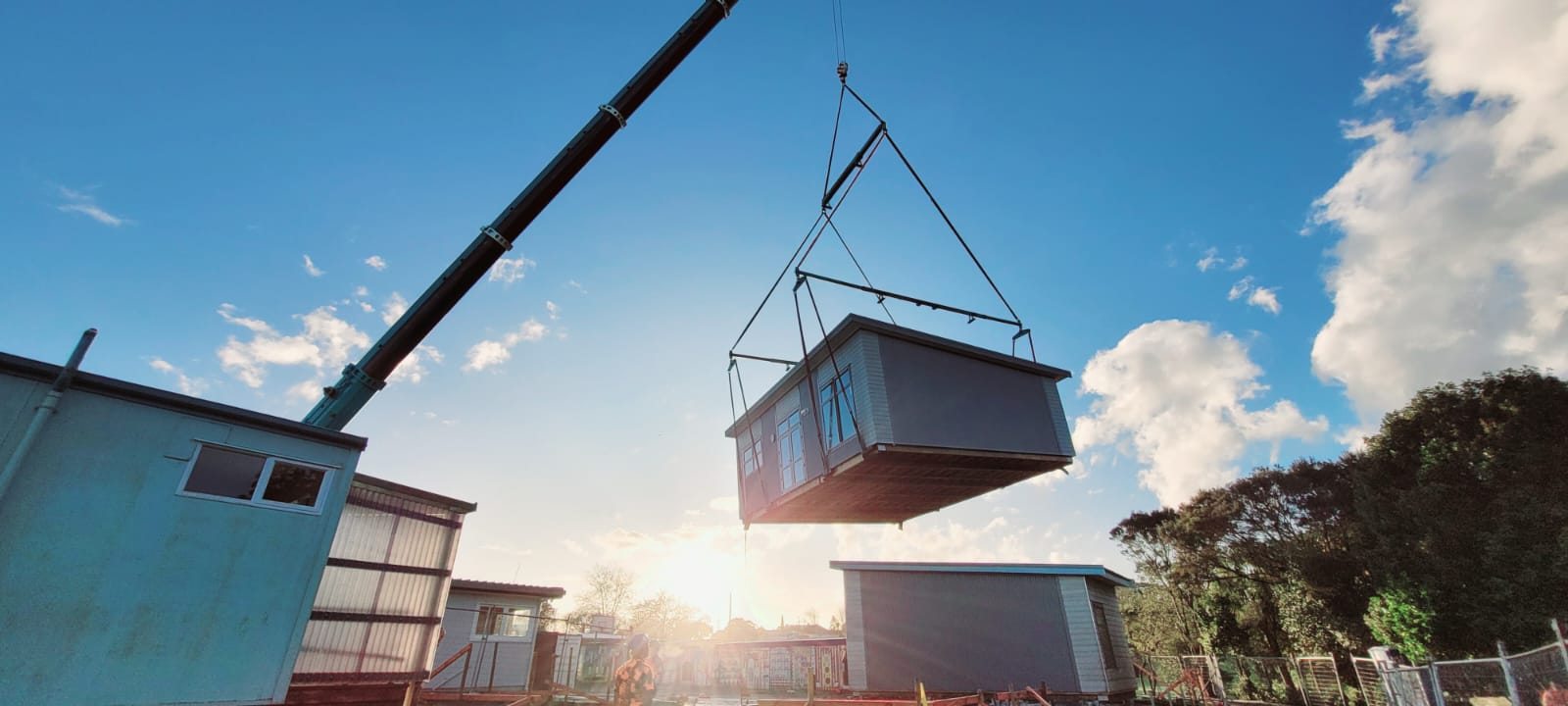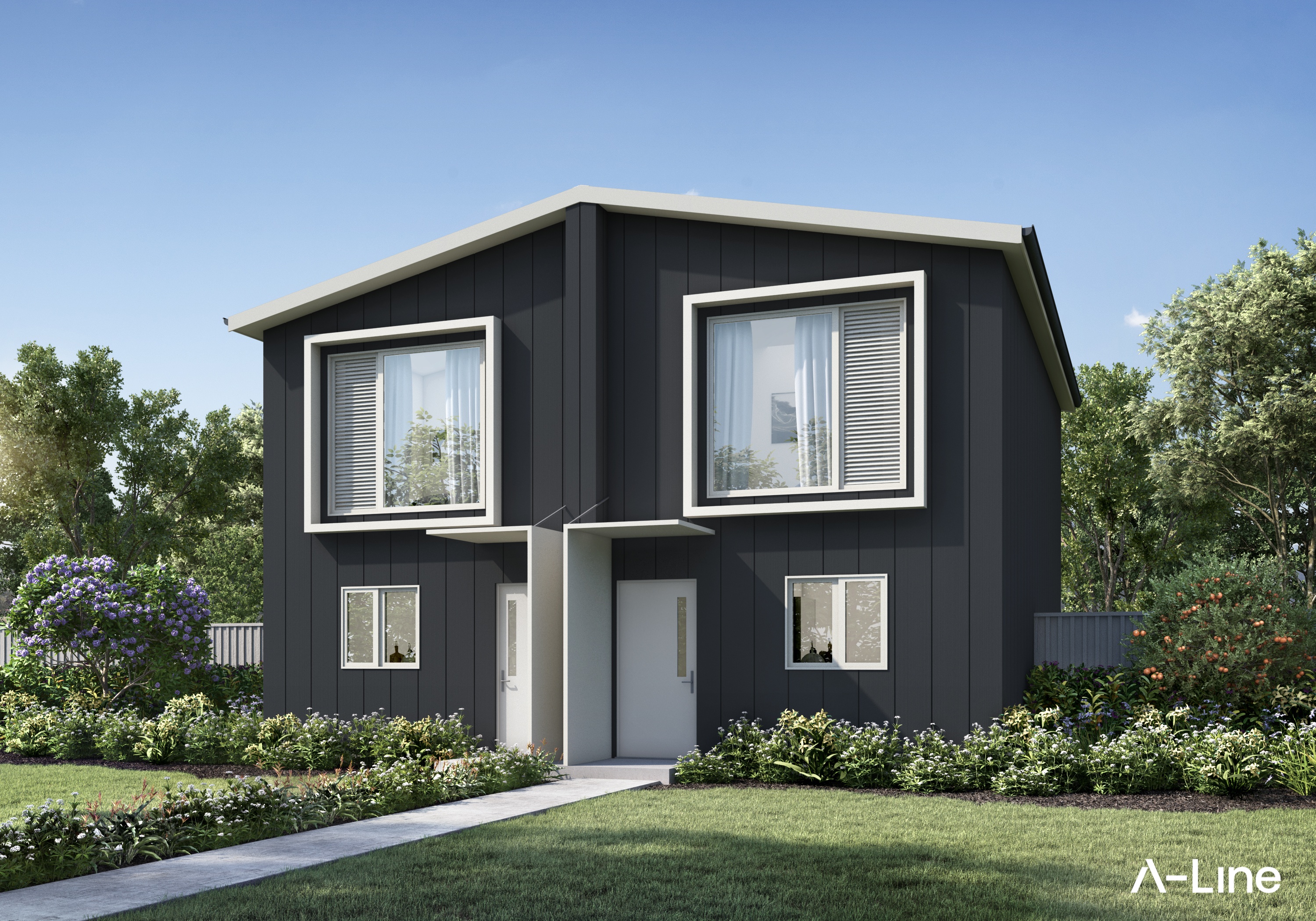News
Frequently Asked Questions
A Modern Method of construction where projects are built off-site in a controlled factory environment. A-Line specialises in volumetric modular construction, which means entire building modulars are fully constructed with structure, services and finishes before being transported to site and assembled.
A-Line boasts a team with a combined 450 years of construction experience, including members from tier 1 construction companies. We offer unique designs and the ability to customize module sizes to fit your project, unlike others who are restricted to set sizes. Our proven track record includes a 25-year partnership with the Ministry of Education, delivering effective modular solutions for schools across the North Island. Additionally, our team has extensive experience with Australian modular companies, providing valuable insights and innovations.
A-Line can construct a wide variety of modular buildings, including classrooms, housing, office blocks, restaurants, industrial plants, wellness centres, luxury resorts, sports park facilities, and animal shelters. Share your concept designs with us, and we’ll bring your modular vision to life. We also specialize in creating bespoke solutions tailored to specific industry needs, ensuring that each project meets the highest standards of functionality and aesthetics.
Volumetric modular addresses some of New Zealand’s biggest construction challenges, including skills shortages, rising costs and slow delivery. By building modules off-site while foundations and site works are prepared simultaneously, projects can be completed faster and more efficiently. The controlled factory environment reduces weather delays, ensures consistent quality and helps manage construction costs by minimising waste and optimising labour.
Yes. Modular elements can be integrated with traditional construction. This hybrid approach allows projects to benefit from the speed, quality and efficiency of off-site construction while still accommodating conventional building methods on-site. It is particularly useful for extensions, staged developments or where certain components must be bespoke. This flexibility enables optimisation of both time and cost without compromising design or functionality.
Modular buildings are highly flexible and can be tailored to suit specific design, functional and aesthetic requirements. From layout and room sizes to finishes and materials, we work closely with clients to deliver solutions that align with their vision while maintaining the efficiencies and quality benefits of off-site construction.
Yes, modular buildings are as durable and safe as traditional buildings. They use the same materials and adhere to the same building codes. Often, additional standards are met, making modular buildings even more structurally sound. For example, modular buildings often undergo rigorous testing for fire safety, wind resistance, and seismic activity, ensuring they meet or exceed all relevant safety standards.
Absolutely. Modular construction is more sustainable than traditional methods for several reasons:
- Less Waste: Offsite construction allows for better utilization of materials, reducing waste.
- Reeduced Site Disturbance: Building offsite minimizes environmental impact and onsite carbon footprint.
- Greater Worker Safety: Factory construction reduces exposure to weather and creates safer working conditions.
- Community Advantages: Shorter onsite construction time reduces disruptions like traffic congestion, noise, and dust. Moreover, modular construction often incorporates energy-efficient designs and materials, further enhancing its sustainability.
While initial costs may be similar, modular construction is more cost-effective over time due to:
- Reduced Construction Time: Building offsite while site work progresses can cut the construction timeline by up to 50%, reducing project management and labor costs.
- Economies of Scale: Cost per unit decreases with higher quantities of similar units/components.
- Flexibility and Reusability: Modular buildings can be repurposed and relocated, reducing the need for new raw materials and energy. Additionally, the controlled factory environment reduces the risk of weather-related delays and damage, further lowering costs.
A-Line’s modular buildings are typically 90% complete before being transported to the site. Depending on site accessibility, they are moved using a housing moving truck or a Hiab. Once onsite, the buildings are either craned into position or driven in. Final on-site work usually involves exterior finishes, depending on the number of building splits. This streamlined process ensures minimal disruption, and a quicker completion time compared to traditional construction.




-min.jpg)

